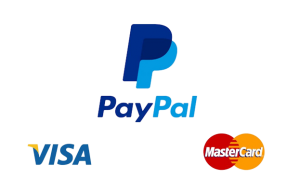Implementing effective data-driven personalization in email marketing requires a nuanced understanding of both technical infrastructure and strategic segmentation. This guide dives deep into the specific processes, tools, and best practices necessary to transform raw customer data into highly personalized, impactful email experiences. By exploring each step with concrete techniques and real-world examples, marketers can elevate their campaigns from generic blasts to precision-targeted messaging that drives engagement and conversions.
Table of Contents
- Selecting and Integrating Customer Data for Personalization
- Segmentation Strategies for Precise Audience Targeting
- Building Personalized Email Content Using Data
- Technical Implementation: Automating Personalization Workflows
- Ensuring Privacy, Compliance, and Ethical Use of Data
- Measuring and Optimizing the Effectiveness of Personalized Campaigns
- Case Study: Implementing a Fully Data-Driven Personalized Email Campaign
- Final Best Practices and Strategic Considerations
1. Selecting and Integrating Customer Data for Personalization
a) Identifying Key Data Sources (CRM, Website Analytics, Purchase History)
Begin by mapping out all available data reservoirs within your organization. Primary sources include Customer Relationship Management (CRM) systems, website analytics platforms (like Google Analytics or Hotjar), and transaction databases. To ensure comprehensive personalization, integrate these sources into a unified data warehouse or Customer Data Platform (CDP). For example, linking your CRM with your eCommerce platform via API allows real-time access to purchase history and customer preferences.
b) Data Collection Methods and Tools (API Integrations, Tracking Pixels, Form Fields)
Implement robust data collection strategies:
- API integrations: Use RESTful APIs to sync CRM and eCommerce data into your marketing platform. For instance, Salesforce APIs can push customer activity data into Mailchimp or HubSpot.
- Tracking pixels: Embed JavaScript tracking pixels on your website to monitor browsing behavior, time spent, and engagement. For example, Facebook Pixel or Google Tag Manager can feed behavioral data into your segmentation logic.
- Form fields: Enhance data capture by adding custom fields in your signup forms, such as interests, preferred brands, or location preferences, ensuring they are optional to maximize participation.
c) Ensuring Data Quality and Accuracy (Deduplication, Data Validation, Updating Mechanisms)
Raw data is often fraught with inconsistencies. Deploy automated deduplication routines to eliminate duplicate entries—use unique identifiers like email addresses or customer IDs. Implement validation scripts that check for format errors (e.g., invalid email addresses) and enforce data integrity rules. Establish regular data refresh cycles, such as nightly updates, to keep customer profiles current. Tools like Talend or Apache NiFi can automate these workflows effectively.
d) Automating Data Synchronization Across Platforms
To prevent data silos, set up real-time or near-real-time synchronization pipelines. Use middleware solutions like Zapier, MuleSoft, or custom ETL scripts to automate data flows. For example, when a customer updates their preferences on your website, triggers should automatically update their profile in your CRM and email platform. Incorporate webhook listeners to facilitate instantaneous updates, minimizing latency and ensuring personalization reflects the latest customer behavior.
2. Segmentation Strategies for Precise Audience Targeting
a) Defining Micro-Segments Based on Behavioral Triggers (Browsing Patterns, Engagement Levels)
Leverage behavioral data to craft highly targeted segments. For example, create a segment of users who viewed a product but did not purchase within 48 hours. Use SQL queries or segmentation rules within your platform to filter users by events such as “cart abandonment” or “product page visits.” Implement scoring models—assign points for actions like clicks or time spent—to distinguish highly engaged users from casual browsers.
b) Creating Dynamic Segments with Real-Time Data (Using Rules and Conditions)
Dynamic segments automatically update as new data arrives. Use conditional rules within your ESP (Email Service Provider) like HubSpot or ActiveCampaign. For example, set a rule: “If last purchase date is within 30 days AND has opened an email in the last week,” then add to the ‘Recent Engagers’ segment. Regularly review and refine these rules to prevent overlap or segment bloat.
c) Combining Demographic and Psychographic Data for Deep Personalization (Interests, Preferences)
Merge static demographic data (age, location) with psychographic insights (interests, lifestyle). For instance, segment users by location + hobby interest (e.g., “Yoga enthusiasts in California”). Use data enrichment services like Clearbit or FullContact to fill gaps. These segments enable tailored messaging, such as promoting local yoga classes or products aligned with user preferences.
d) Testing and Refining Segmentation Criteria (A/B Testing, Performance Metrics)
Implement systematic A/B tests to evaluate segmentation effectiveness. For example, test a broad segment versus a highly refined one on open and click-through rates. Use multivariate testing to compare different segmentation schemes simultaneously. Track performance metrics over time, and iterate based on statistical significance—tools like Google Optimize or Optimizely facilitate this process. Document every change to build a knowledge base for future segmentation refinement.
3. Building Personalized Email Content Using Data
a) Dynamic Content Blocks and Conditional Rendering (Show/Hide Based on User Data)
Use your ESP’s dynamic content features to display different blocks based on customer attributes. For example, in Mailchimp, insert *|IF:PRODUCT_INTEREST|* conditions to show relevant product recommendations. Implement fallback content for missing data to avoid broken layouts. Test conditional logic thoroughly in sandbox environments to ensure correct rendering across devices.
b) Personalization Tokens and Variables (Name, Location, Recent Activity)
Insert tokens dynamically—such as {{first_name}}, {{city}}, or {{last_purchase_date}}—to make emails feel personally crafted. Use data placeholders from your CRM, ensuring your data pipeline populates these tokens accurately. For instance, a subject line like “{{first_name}}, your favorite items are back in stock” can increase open rates by 20%.
c) Designing Modular Email Templates for Flexibility (Component-Based Design)
Create reusable template components—headers, footers, product blocks—that can be assembled dynamically based on user data. Use a modular design approach in platforms like Salesforce Marketing Cloud’s Content Builder or Mailchimp’s Template Builder. This reduces development time and ensures consistency across campaigns. For example, a “Recommended Products” module can adapt its content per recipient without duplicating entire templates.
d) Incorporating Behavioral Triggers into Content Strategy (Cart Abandonment, Browsing History)
Leverage behavioral data to trigger personalized content. For example, if a user abandons a cart, send a reminder with the specific items left behind, including images, prices, and direct links. Use dynamic blocks that pull in real-time data about the abandoned cart items from your eCommerce platform via API. Timing is crucial—send within 1-2 hours of abandonment, and consider including a limited-time discount to incentivize conversion.
4. Technical Implementation: Automating Personalization Workflows
a) Setting Up Data-Driven Automation Triggers (Customer Actions, Lifecycle Stages)
Define clear triggers within your marketing automation platform. For example, set a trigger: “Customer reaches 30 days post-purchase” to send a re-engagement email. Use event listeners or webhook integrations to initiate workflows based on real-time data. Map lifecycle stages explicitly in your CRM—such as lead, new customer, loyal customer—to customize email sequences accordingly.
b) Configuring Email Send Logic Based on Data Conditions (Time Delays, Frequency Capping)
Implement conditional logic within your automation rules:
- Time delays: Send follow-up 24 hours after initial email if no response.
- Frequency capping: Limit to 3 emails per recipient per week to avoid spam complaints.
- Conditional branches: For segment A, send a promotional offer; for segment B, send educational content.
Use built-in features in platforms like HubSpot workflows or ActiveCampaign automation to set these parameters precisely.
c) Using Marketing Automation Platforms and APIs for Real-Time Personalization (e.g., Mailchimp, HubSpot)
Leverage APIs to fetch and update user data during email send time. For example, configure Mailchimp’s Mandrill API to dynamically insert product recommendations based on current browsing data. Use real-time API calls to your product catalog to populate content blocks, ensuring offers are always current. For platforms lacking native real-time capabilities, consider pre-rendering dynamic content at send time via server-side scripts or cloud functions.
d) Testing and Validating Automation Flows (Sandbox Testing, Metrics Tracking)
Before deploying live, rigorously test workflows in sandbox environments. Simulate user actions to verify trigger conditions, timing, and content rendering. Use metrics dashboards to monitor open rates, click-throughs, and conversion rates—set up alerts for anomalies. Incorporate A/B tests within automation sequences to identify the most effective personalization tactics. Document test results and continuously refine your flows based on data insights.
5. Ensuring Privacy, Compliance, and Ethical Use of Data
a) Implementing Data Privacy Regulations (GDPR, CCPA) in Personalization Processes
Audit your data collection points to ensure compliance with GDPR and CCPA. For GDPR, obtain explicit consent before collecting personal data and provide clear opt-in mechanisms. Use consent management platforms like OneTrust to track user preferences and consent status. When processing data for personalization, ensure you have documented legal bases (e.g., user consent, legitimate interests). Regularly review your data practices and update privacy policies accordingly.
b) Securing Customer Data During Collection and Storage (Encryption, Access Controls)
Encrypt data both at rest and in transit. Use TLS protocols for data transmission and encryption standards like AES-256 for storage. Limit data access to authorized personnel via role-based access controls. Regularly audit access logs and implement multi-factor authentication. For sensitive data, anonymize or pseudonymize where possible to reduce risk.
c) Managing User Consent and Preferences Effectively (Opt-in/Out Mechanisms)
Design user-friendly preference centers allowing recipients to modify their data sharing and communication preferences easily. Embed clear opt-in and opt-out links in every email, and honor user requests promptly. Maintain records of consent status tied to individual profiles to ensure personalized communications align with user permissions.
d) Avoiding Over-Personalization and Privacy Intrusion Pitfalls
Balance personalization with privacy by limiting data collection to what is necessary. Avoid sensitive data unless explicitly authorized. Use aggregated or anonymized data for broader targeting. Regularly review your personalization tactics to prevent unintended privacy breaches or perceptions of surveillance. Transparency in data usage fosters trust and long-term engagement.
6. Measuring and Optimizing the Effectiveness of Personalized Campaigns
a) Defining Key Metrics (Open Rate, Click-Through Rate, Conversion Rate)
Establish a clear KPI framework. Track open rate as a primary indicator of subject line relevance, click-through rate for content engagement, and conversion rate to measure actual goal achievement. Use UTM parameters to attribute conversions accurately across channels. Segment performance metrics by audience groups to identify high- and low-performing segments for targeted improvements.
b) Analyzing Data-Driven Insights to Refine Personalization Tactics (Heatmaps, Engagement Segments)
Use heatmap tools (like Crazy Egg) to understand where recipients focus their attention within your emails. Combine this with engagement segmentation—identifying users who frequently interact versus those who rarely open. Use these insights to tailor content complexity, call-to-action placement, and messaging tone. Regularly revisit and update your segmentation and content strategies based on these behavioral insights.
c) Conducting A/B Testing on Personalized Content Variations (Subject Lines, Offers)
Design controlled experiments to compare different personalization elements. For example, test personalized subject lines like “<



